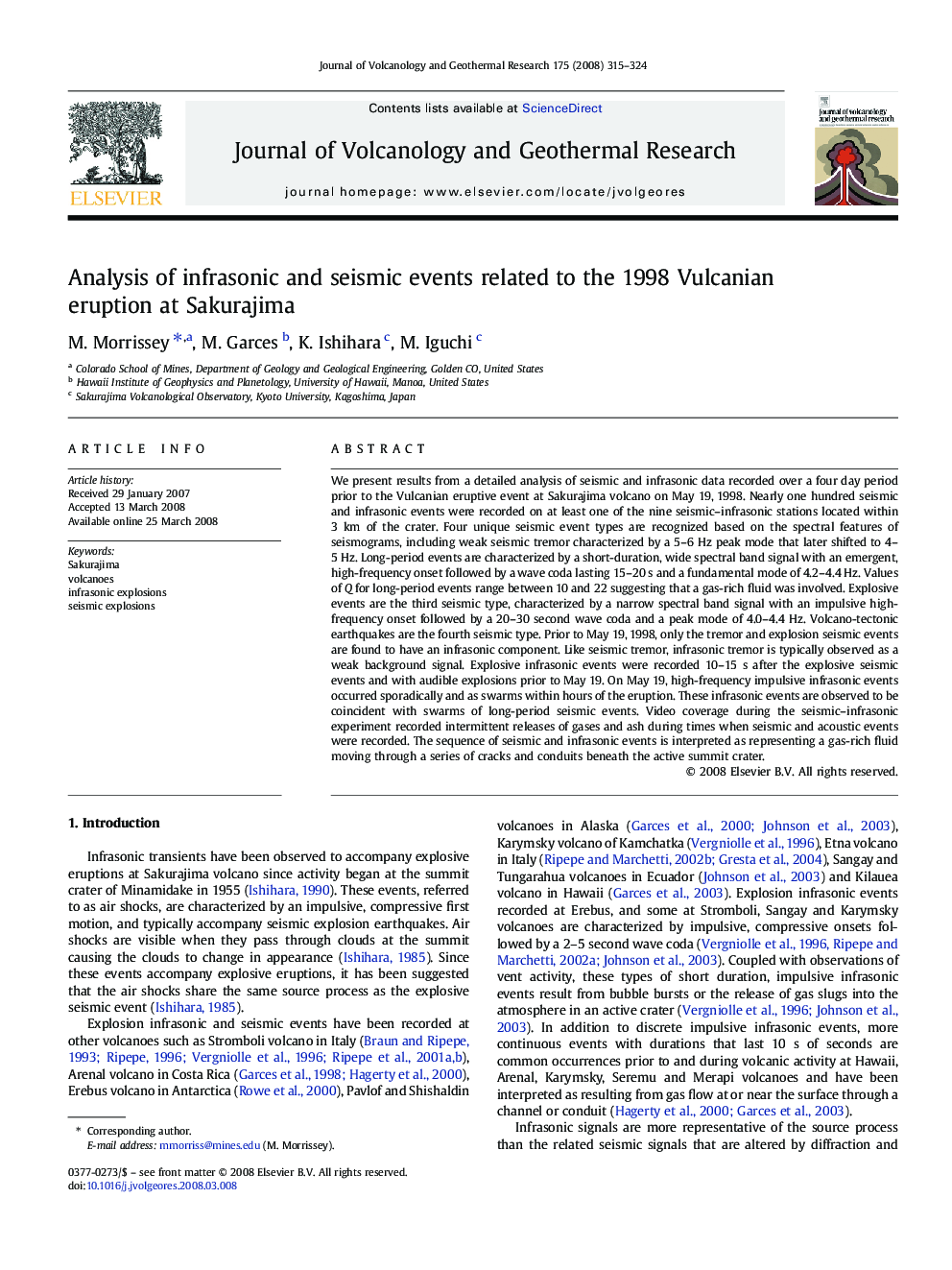| کد مقاله | کد نشریه | سال انتشار | مقاله انگلیسی | نسخه تمام متن |
|---|---|---|---|---|
| 4714605 | 1353975 | 2008 | 10 صفحه PDF | دانلود رایگان |

We present results from a detailed analysis of seismic and infrasonic data recorded over a four day period prior to the Vulcanian eruptive event at Sakurajima volcano on May 19, 1998. Nearly one hundred seismic and infrasonic events were recorded on at least one of the nine seismic–infrasonic stations located within 3 km of the crater. Four unique seismic event types are recognized based on the spectral features of seismograms, including weak seismic tremor characterized by a 5–6 Hz peak mode that later shifted to 4–5 Hz. Long-period events are characterized by a short-duration, wide spectral band signal with an emergent, high-frequency onset followed by a wave coda lasting 15–20 s and a fundamental mode of 4.2–4.4 Hz. Values of Q for long-period events range between 10 and 22 suggesting that a gas-rich fluid was involved. Explosive events are the third seismic type, characterized by a narrow spectral band signal with an impulsive high-frequency onset followed by a 20–30 second wave coda and a peak mode of 4.0–4.4 Hz. Volcano-tectonic earthquakes are the fourth seismic type. Prior to May 19, 1998, only the tremor and explosion seismic events are found to have an infrasonic component. Like seismic tremor, infrasonic tremor is typically observed as a weak background signal. Explosive infrasonic events were recorded 10–15 s after the explosive seismic events and with audible explosions prior to May 19. On May 19, high-frequency impulsive infrasonic events occurred sporadically and as swarms within hours of the eruption. These infrasonic events are observed to be coincident with swarms of long-period seismic events. Video coverage during the seismic–infrasonic experiment recorded intermittent releases of gases and ash during times when seismic and acoustic events were recorded. The sequence of seismic and infrasonic events is interpreted as representing a gas-rich fluid moving through a series of cracks and conduits beneath the active summit crater.
Journal: Journal of Volcanology and Geothermal Research - Volume 175, Issue 3, 10 August 2008, Pages 315–324